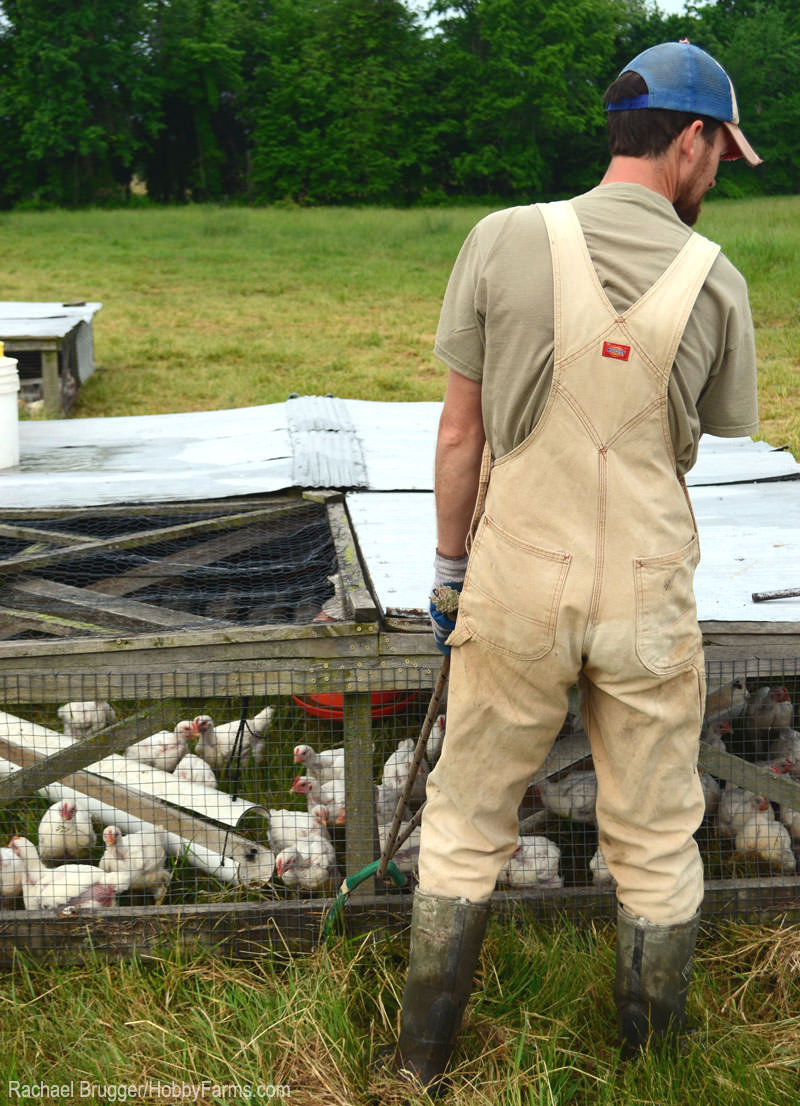
What do arks and tractors have in common? Not much, unless you put the word “chicken” in front of them. Then they’re the same thing: movable poultry shelters that allow you to shift your birds to new grazing ground as needed or desired. Although equally adaptable for your laying flock, chicken tractors are a great way to give broilers the benefits of free-range living while contributing to sustainability.
Elements of an Ark
Thankfully, your own ark can be a lot simpler to build than Noah’s. Choices for permaculture-friendly design and materials abound, allowing an opportunity to upcycle low-cost, low-maintenance and sustainable materials. You can find a plethora of options for DIY chicken tractors on the web, in magazines or in books. No matter what shape you settle on—square, rectangle, A-frame or hoop—the ideal tractor for broilers should contain certain basic elements:
- Movability: Some arks even have wheels to make relocation easier. Other options include skids, skis or lifting one end like a glorified wheelbarrow and dragging/rolling the tractor to a new site.
- Sufficient shelter: Secure it to keep your chickens safe from predators, weather and temperature extremes.
- Space: Make the ark big enough to not crowd your birds and small enough to be moved without injuring yourself or your chickens in the process.
- Stability: Especially if your area receives high winds.
- Nest box: This is only necessary for laying hens.
Narrow Your Options
In Joel Salatin’s book Pastured Poultry Profits (Polyface, 1996), he details his chicken-tractor method of housing broilers on a fairly large scale. On the other end of the spectrum, many hobby farmers just want to raise their next year’s meat supply or maintain a small flock of laying hens in a sustainable fashion. Determine your own needs and goals, and build accordingly. Ultimately, the “right” size, shape or design is the one that fits your particular situation the best. Some considerations include:
- Who will be moving the ark? If you use a lawn tractor, size and weight is not as important as when mobility will depend on your muscles alone. It’s amazing the weight of materials once assedmbled!
- How many chickens do you plan to house? The University of Florida Extension recommends a minimum of 3 square feet of space per bird in a chicken tractor. If the number of birds you want to house necessitates building a larger ark than you can physically lift and move, consider downsizing your flock or splitting it between two smaller tractors, as overcrowding invites all sorts of health issues for poultry.
Materials and Building Basics

Sustainability aside, what you use to build your chicken tractor is largely a matter of weight, aesthetics, and how well certain building supplies will endure your particular mix of climate and pests. Although wood is eminently recyclable, untreated wood doesn’t last very long in some of the moister parts of the country, especially when in contact with the ground. Don’t hesitate to combine what you have on hand or can acquire and/or upcycle easily.
You will need:
- a framework/support structure
- a door/hatch for owner access to feed, water and care for the birds
- a shelter area so the chickens can get out of the weather/sun
- wire covering to keep poultry in, predators out, and allow for adequate ventilation
One option for a chicken ark combines a wooden frame for the base and door access, PVC “hoops” overlaid with woven wire, an additional predator-proof chicken wire overlay for the lower 2 feet or so, a tightly stretched tarp over one end for shelter, and a door of your choice.
Predators and Escapees
Chickens might not have very large brains, but even broilers, with their reduced mobility, seem to find avenues of escape if they’re available. Built-in wheels or skids can sometimes create a gap that enterprising birds will take advantage of—and if they can get out, predators can potentially get in. The No. 1 daytime predatory threat is dogs, followed closely by cats, coyotes and foxes. Make sure the frame rests snugly on the ground and that the tractor weighs enough to resist tipping. Securing a strip of repurposed carpet or inner-tubing around the base so that it flares out onto the ground can provide an added deterrent from diggers within and without. This will also help discourage nighttime visits by those same enterprising cats, plus possible raccoons, rodents or possums.
Whether you’re raising broilers à la Salatin or just a few for your own freezer, chicken tractors are a sustainable and affordable way to go.




